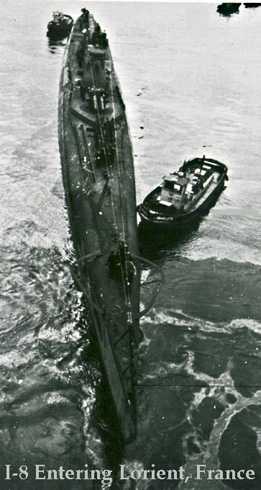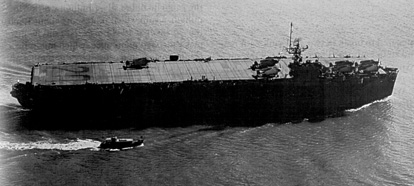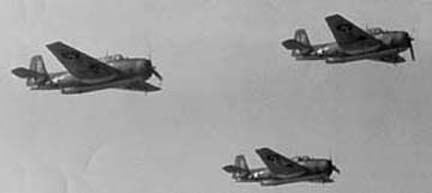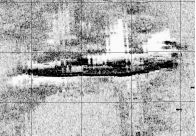V 5OOO metrech se hledá dost blbě:)
I-52 Golden Submarine
Categories: Wars , War at sea , War treasures

I-52 GOLDEN SUBMARINE
I-52 also known as the Golden Submarine because of its latest cargo. However, the gold she was carrying in payment for technology and war materials never made it to occupied France. There is also speculation that she was carrying peace proposals, but this is hard to believe.
The submarine was designed and built in the Mitsubishi shipyards. At its core, it was designed as a transport. It was very long and carried a crew of 94 men. During World War II,
built two more sister ships, the I-53 and I-55, and 17 more were planned. At the time, these were clearly the largest submarines in the world.
It is March 10, 1944 and the submarine is ready for an exchange mission. A transcontinental voyage is planned and the crew, under the command of Uno Kameo, is in Kure preparing for a very difficult task: to penetrate the Allied blockade. After setting sail, they will head through Singapore, across the Indian Ocean and into the Atlantic. In Japan, 9.8 tons of molybdenum, 11 tons of tungsten, 2.2 tons of gold, 3 tons of opium and 54 kg of caffeine are loaded on board. The submarine also carried 14 passengers (Japanese technicians) who were to study the latest technology in Germany, particularly anti-aircraft guns, torpedo engines and torpedo boats. The gold was earmarked directly for the purchase of German optical technology. In Singapore, the ship then loaded 120 t of tin ingots, 59.8 t of raw rubber and 3.3 t of quinine.

On 6 June, the Japanese naval attaché in Berlin, Rear Admiral Kojima Hideo, announced the early arrival of the submarine. For obvious reasons (the Normandy landings), the submarine was diverted from its route to the French port of Lorient and thus took a course for Norway. Before that, she was to rendezvous with a German submarine.
On the night of 22 June 1944, about 850 miles west of the Cape Verde Islands, I-52 encountered the submarine U-530 under the command of Lieutenant Commander Kurt Langer. U-530 provided the Japanese submarine with fuel and also Naxos, a German radar detector. Also transferring aboard the I-52 were Boatswain's Mates Schulze and Behrendt and a German liaison officer to guide the submarine through the Bay of Biscay.

The Allies, who had been reading both the German and Japanese codes for some time, decided that the I-52's cargo must in no way fall into German hands. From Casablanca, a US tactical group led by the escort carrier USS Bogue set sail. The ships departed on 15 June (this tactical group had destroyed a total of 13 U-boats between February 1943 and July 1945). Upon reaching the area of operations, Grumman TBF AVANGER aircraft set out to search for the U-boats. The search began at 23:00. U-530 could not be found, but at approximately 23:40 I-52 appeared on the Avanger's radar. Interestingly, the operator, Jasse D. Taylor only had one half of the radar screen working.

The aircraft was indicated for attack and a depth charge was dropped. The crew registered an explosion on the starboard side of the submarine and the subsequent sinking of the vessel. In response, the Avanger dropped a newly developed device - acoustic probes. Subsequently, the crew dropped the first acoustic torpedo developed by Harvard University. Codenamed FIDO, the torpedo was designed not to destroy the submarine, but only to damage it and force it to surface.
Within minutes, radiosondes then brought the sounds of explosions and mechanical noises characteristic of a submarine breakup. By then, however, the Avanger must have returned to the mother carrier Bogue, and Commander Taylor was convinced that he had sunk the submarine.
He was relieved on watch by Lieutenant Commander William Gordon, accompanied by a civilian and an expert on the propagation of sound underwater. At about 0100, new sounds of the ship's propeller were heard. Subsequently, another Fido sank below the surface of the sea. Thereafter, no further activity was reported. The next day, a large amount of raw rubber was found on the sea surface, as well as human remains.
The radiosonde recordings containing the last moments of I-52 are still in the US National Archives in Washington D.C.
In August 1944, Kriegsmarine headquarters formally announced the sinking of I-52 in the Bay of Biscay. The Japanese Imperial Navy did the same in December 1944.
Modern salvage operations
In 1994, Project ORCA was launched to find the I-52 and recover her valuable cargo. Despite great efforts and the commissioning of the Russian research vessel Akademik Keldysh, the search was abandoned in March 1995 with no success.
Very soon after, in May 1995, Paul Tidwell located the wreck at a depth of 5,240 m. The vessel's conning tower was intact and the ship's identification number was still visible. On examination by robots, it was found that there was a hole in the rear of the conning tower, probably caused by a torpedo hit. The entire area around it was covered with debris.
Plans were made to retrieve the submarine, but the Japanese government began to argue that from their point of view it was a Japanese war grave. Eventually the Japanese authorities were persuaded and a metal box was taken from the debris field with the hope that it was part of a gold hoard (estimated nominal value of about 25 million. However, when it was opened, it turned out to contain opium, which was thrown back into the sea.

In an article published in the Japanese Times, Paul Tidwell promises his return to the wreck in 2006, which has probably not yet happened.
I-52 in Numbers:
-
3,644 tons submerged
-
length 108.5 m
-
two diesel gensets of 4,700 hp when surfaced and 1,200 when submerged
-
operational range 21,000 nautical miles
-
max speed 17.7 knots on the surface, 6.5 knots below the surface
-
armament: torpedo launcher 53 cm ..... 6 pcs ; anti-aircraft gun 25 mm ..... 2 pcs
-
crew 94 men and 18 civilians
-
cargo 300 tons
The article is included in categories:






 )
)

